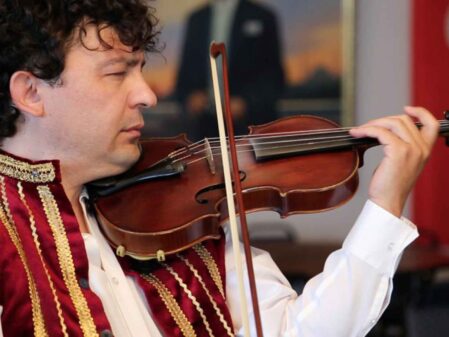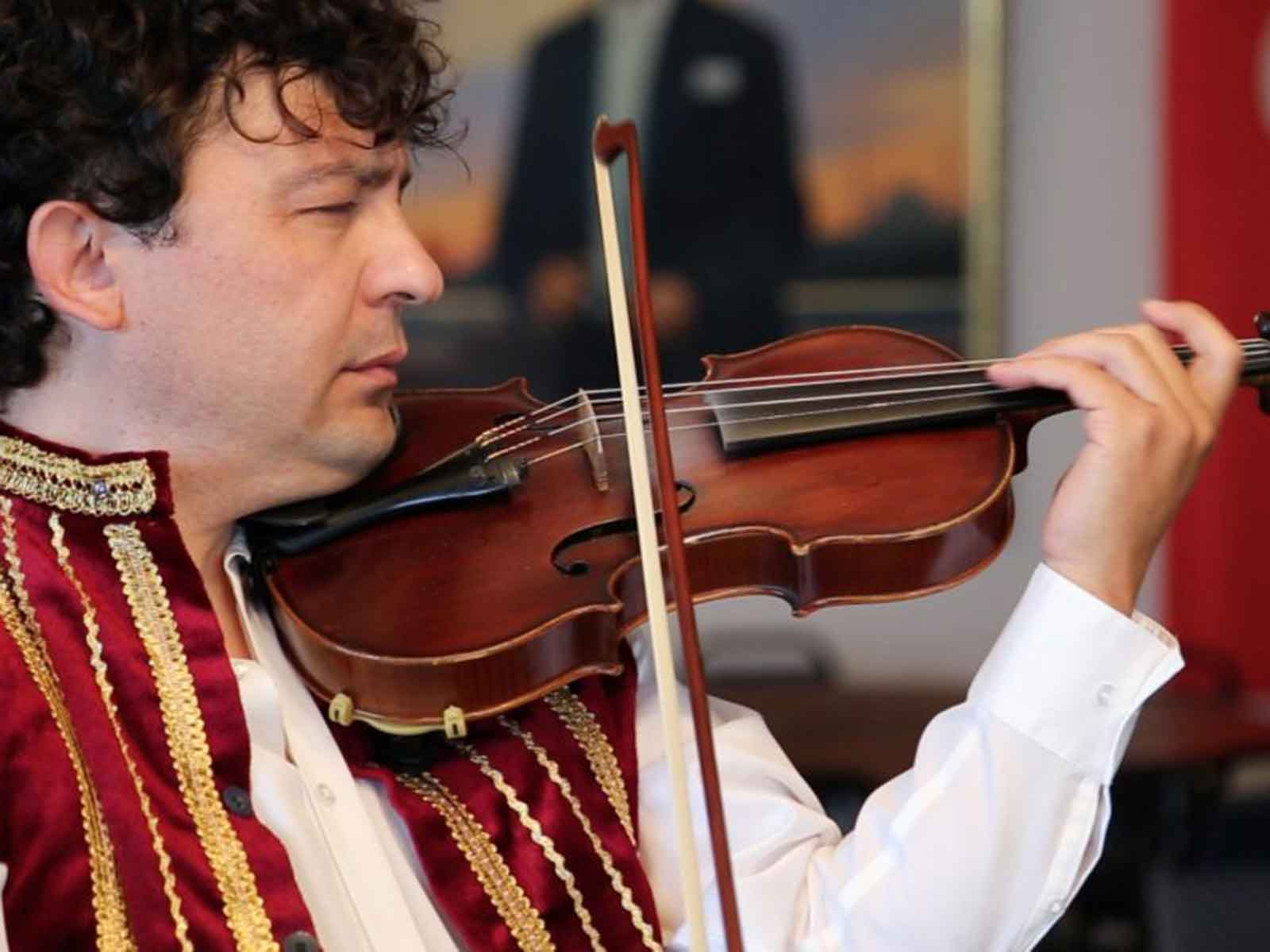Crimean Traditional | New York, NY
Crimean Tatars are an Islamic, ethnically Turkic people who trace their history in Crimea back to the 12th century, when they came west under the leadership of Batu Khan (Ghengis’ grandson) and intermarried with people already living on the Peninsula. Their vibrant music and dance traditions have substantial similarities with other cultures around the Black Sea, but with a special flair that captivates the ear and the eye: uniquely accented 7/8 dance rhythms and polymetric songs, deft interweaving of Eastern and Western modes, and precise, athletic dance steps that bring energy to any performance.
Following waves of involuntary dispersal beginning in the 1700s, nearly the entire remaining Crimean Tatar community was forcibly uprooted from Ukraine by the Russians in 1944, driven into exile in cattle cars. Many perished. Most members of this ensemble were born to exile families in Uzbekistan, only returning to Crimea in the late 1980s and early 1990s when Crimea moved towards political stability as an autonomous republic of Ukraine. Three members of the group—ensemble director Nariman Asanov (violin), keyboard player Eldar
The musical section of this ensemble was formed in the mid-2000s with the addition of trumpeter Rustem Faizov and Lennur Mamutov on hand drum. The group also includes a dance troupe that often performs with them as they will at the Montana Folk Festival.
The New York Crimean Tatar Ensemble members serve as ambassadors for their culture, having performed to great acclaim at venues like the Lincoln Center and the United Nations, bringing attention to the precarious position of Crimean Tatars after Russia’s forcible annexation of the Peninsula in 2014.
Perhaps most importantly, they play an essential role in supporting the Cultural Center’s dance school, which is passing on these traditions to the next generation.


